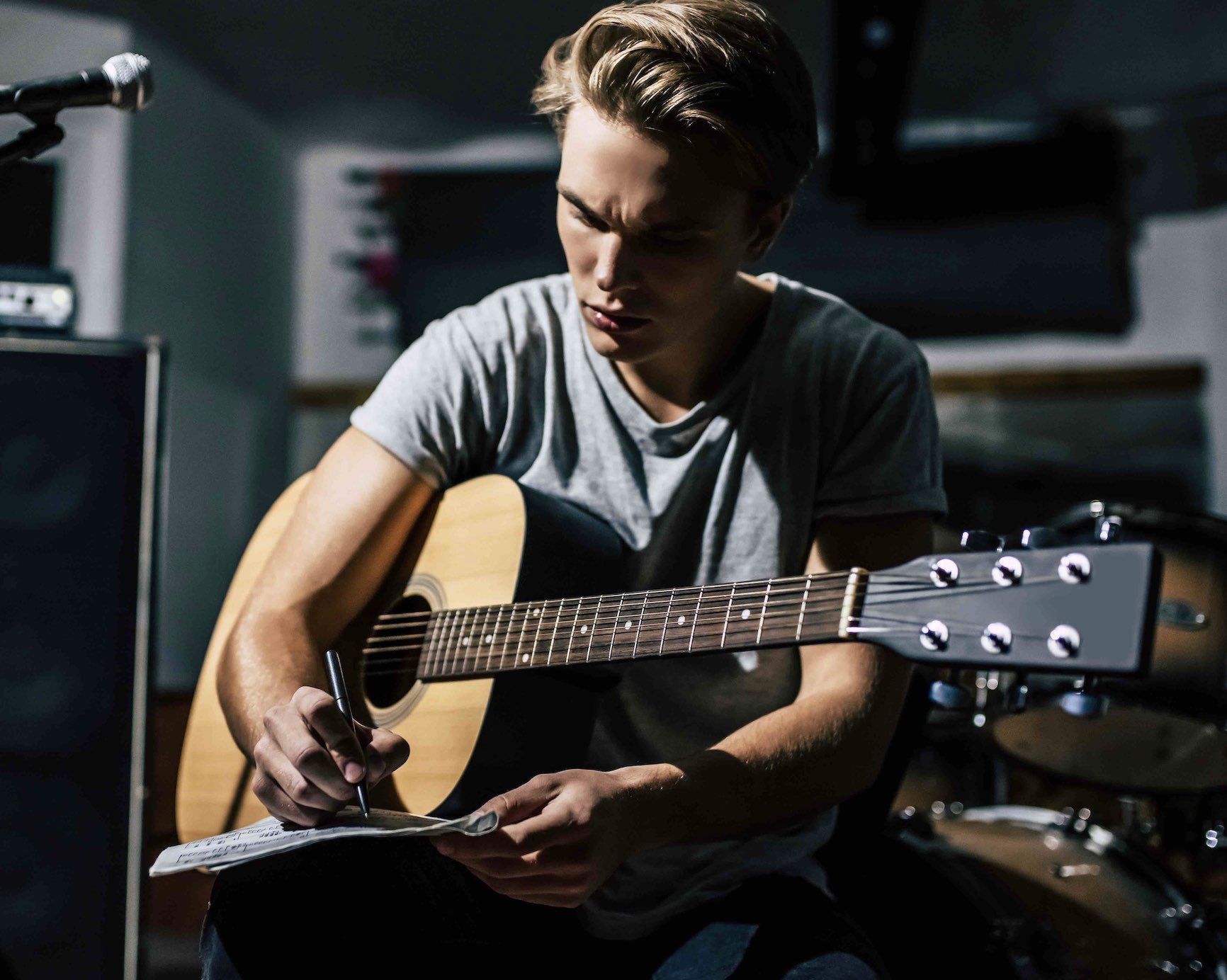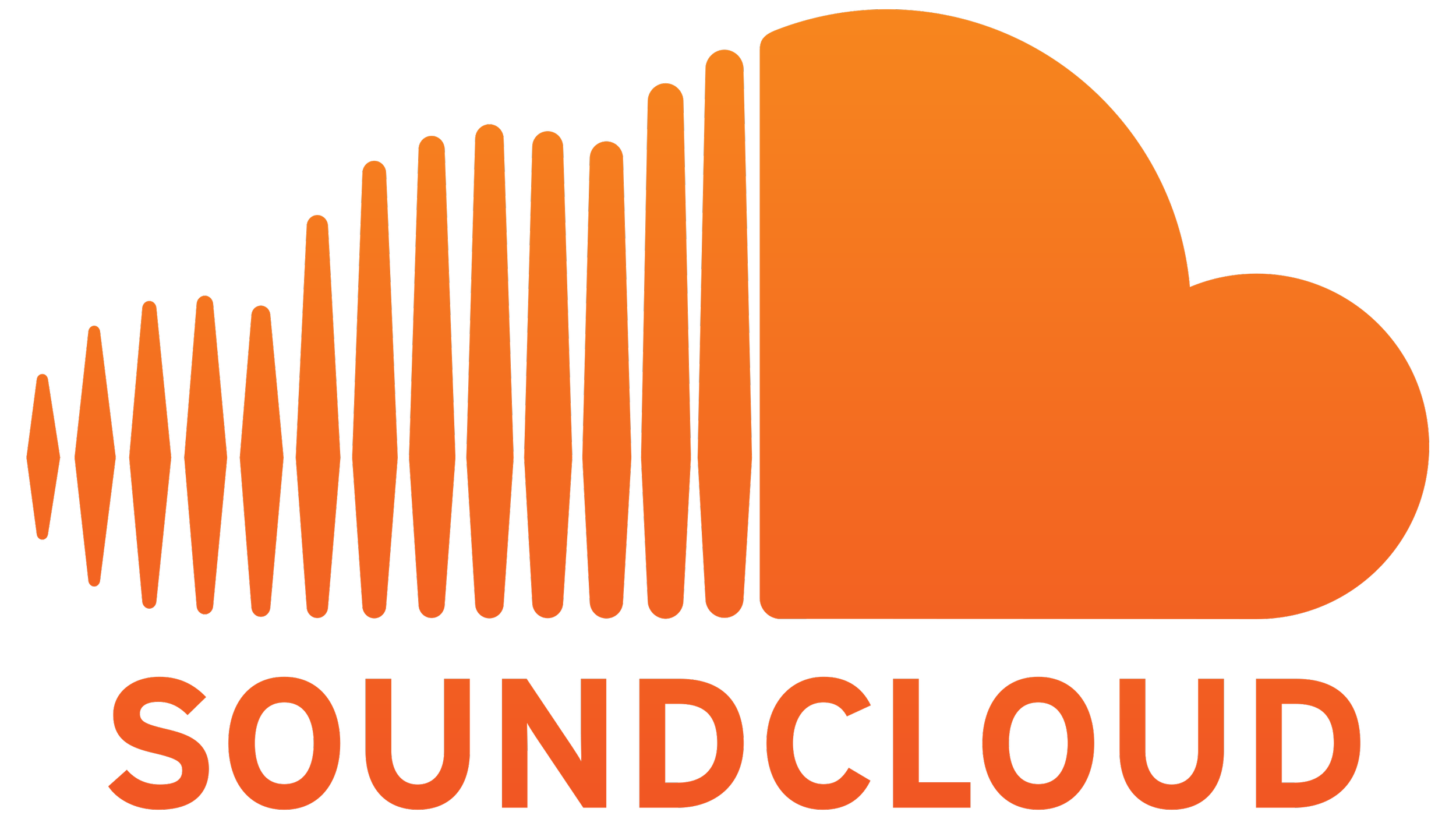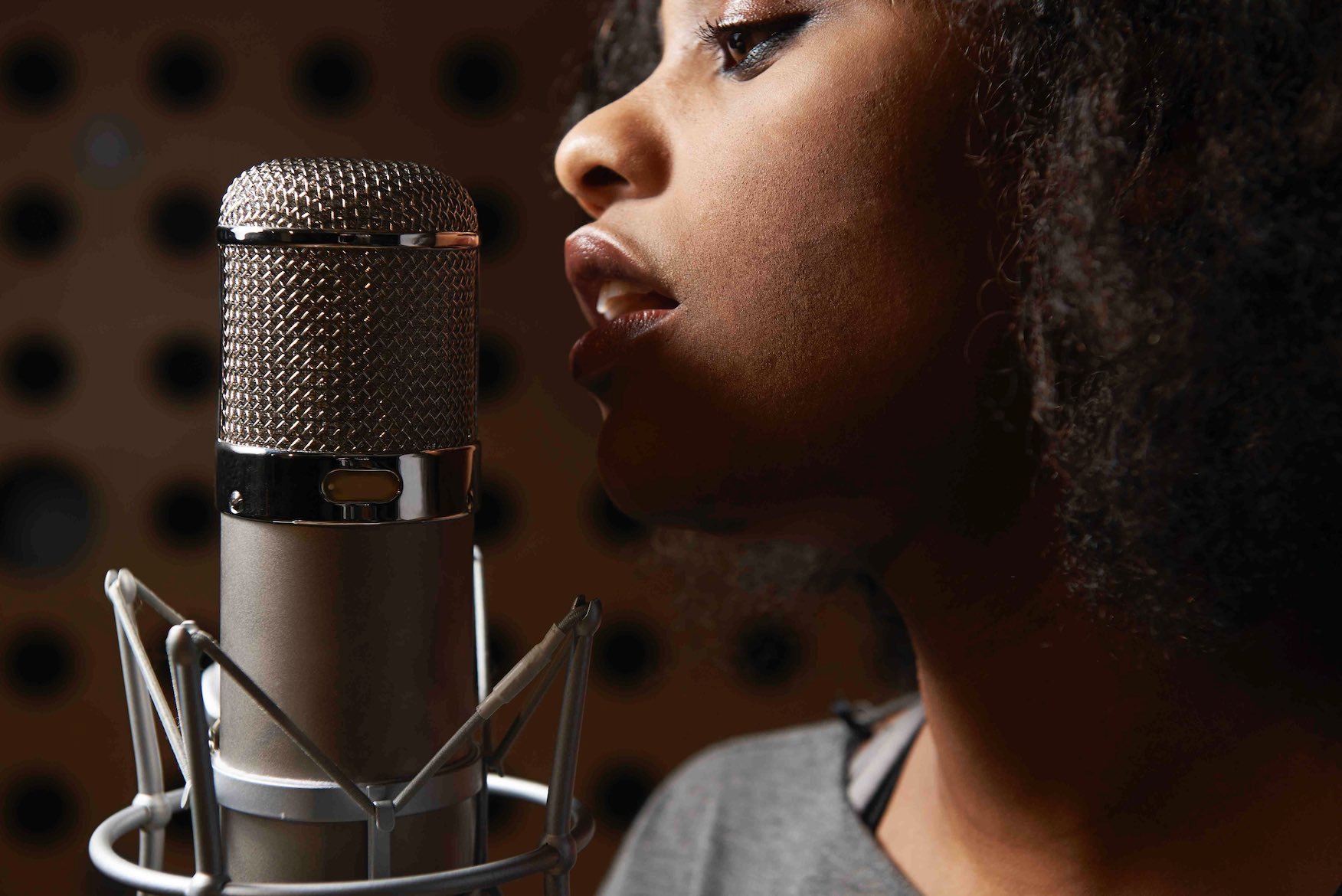Tips On Writing Songs for Film, TV, Advertising & Trailers
January 4, 2023

TV and film music supervisors love songs that are authentic but even when writing from the heart, there are certain methods you can use when writing songs for film and TV.
A recurring theme from most music supervisors is that they can immediately tell if a song is authentic or not.
Songs that were written specifically for sync licensing tend to stand out as much, if not more than songs that were written from the heart, which is not a good thing.
In this Sync Songwriter post, we’ll take an in-depth look at writing songs for TV, film, and advertising and how authenticity wins every time.
We’ll also examine how writing songs for film and TV can be different from writing songs for commercials and trailers.
Topics in the post include:
- Specific Emotions That Music Can Evoke
- No-Romantic Relationship Themes in Music
- Authentic Songs Vs Writing Songs for Syncs
- Writing Songs for Film & TV
- Writing Instrumental Music for Film & TV
- Writing Songs for Commercials & Ads
- Writing Songs/Music for Trailers
- Sync Licensing cover songs
Specific Emotions that Music Evokes
The job of the music supervisor is to find the ideal songs that convey the emotions of what is being shown on screen.
Music is subjective and can mean different things to different people. Even so, there are specific emotions and feelings that music can evoke including among others:
- Joy, happiness, humor
- Beauty, confidence, self-assuredness
- Excitement, heroism, triumph
- Compassion, empathy, sympathy
- Sadness, uneasiness, annoyance, irritability
- Defiance, tension, revenge
- Fear, anxiety

When writing songs for film and TV with these specific emotions and feelings, keep in mind that the song must serve the scene and not the other way around.
Remember, you don’t need to tell the story with your music. You just need to complement the story that is being told on screen. Songs are used to help heighten the scene’s emotion and make the scene more memorable for the viewer.
Songs with Non-Romantic Relationship Themes
Approximately 60% of all songs released are love songs dealing with romance, relationships, loss, and sex. As you might expect, music supervisors tend to have a lot to choose from when looking for romantic relationship songs.
However, songwriters tend to write far fewer songs about non-romantic relationships and demand can be high for these types of songs. Non-romantic lyrics might include the following themes:
- Friendships
- Siblings
- Parents
- Children
- Teachers & Mentors
- Or the relationship with self




Like romantic relationships, non-romantic ones can also be powerful, with complex connections that drive motivation between people who have some form of shared history. Keep this in mind when writing songs for film and TV.
Authentic Songs Vs Writing Songs for Sync
Time and time again my music supervisor friends say that what they want are songs that sound authentic. Authentic songs reflect you, the artist, your genre, and your artistic sensibilities.

No one else has your experiences or your uniqueness for creative expression. You can use this to your advantage.
Most music supervisors can tell when a song was written “from the heart.”
They can also tell when an artist is intentionally writing songs for sync and crafting the songs to fit specific types of scenes or specific genres.
I don’t recommend writing songs for film and TV that fall outside your music genre.
If you are a country or rock artist and have never written a Rap or R&B song, it will be difficult to come across as authentic if you try to write a Rap or R&B song.
Some artists specialize in those genres and will sound authentic compared to what you might be able to write and submit. Even so, writing to a sync brief, real or imagined, can be a good exercise for expanding your skill set and your creativity.
That said, there are some conventions you can use when writing songs for film and TV. There are even methods for writing songs for advertising and trailers.
We’ll get more into how to use these methods a little later in this article.

Writing Songs for Film and TV
Earlier in this article, we explored several important points about writing songs for film and TV including:
- The different specific emotions in songs
- Romantic vs non-romantic song themes
- Authenticity vs writing songs specifically for sync
Here are a few other topics to be aware of.
Song Arc
The best songs for sync licensing have some form of arc to them. Songs that are very linear and sound the same throughout with very little change or build are much more difficult to place.
When writing songs for film and TV that are linear, they still must be authentic, well-written and produced, and well-targeted. However, linear songs with little arc to them are not as “sync-able”.
Try and write your songs so that they build as the song progresses. Add new instruments, stack your vocals, or add background vocals or anything that will help the song change, progress, and build.
This approach will give the music editors a lot more options to work with when editing your songs to fit a scene. Be sure to use drops or breaks in between sections to give music editors even more options for editing.
Niche Songs
There are plenty of sync licensing opportunities for the most popular music genres like Pop, Rock, R&B, Rap, and Hip-Hop. Film and TV projects that deal with current topics generally look for music that is trending, which also means that the competition is a lot higher.
That said, there are plenty of artists with authentic music that falls outside of today’s most popular genres.

This can actually be a good thing. Even though there may be far fewer opportunities for songs that are niche, when the opportunity arises, your unique song will have far less competition. You could be a big fish in a very small pond!
Niche music may include sub-genres but also songs like polkas, vocal jazz, new age, indigenous, meditation music, and ethnic or country-specific songs.
Period Songs
Not always but in most cases, authentic original recordings of songs prior to WW2 or songs from the 50s, 60s, 70s, 80s, 90s, and 2000s get far fewer sync opportunities.
There are plenty of period films and TV shows however that pop up now and then and need authentic period music. So, if you have some decent older recordings, dust them off and have them ready when the opportunity arises.
Include Instrumentals
When writing songs for film and TV, there are more sync opportunities for vocal songs than there are for instrumental music. In a lot of cases, when a TV or film project needs instrumental music, they will have a composer who can write-to-picture. Otherwise, they may check out some of the many music libraries for instrumental tracks.
Even so, when pitching songs for sync opportunities you should always include an instrumental version (without vocals).
It’s a good idea to have the following available when pitching your songs for sync:
1. Vocal version.
2. Instrumental version (minus lead vocals and background vocals).
3. Instrumental version (minus lead vocals but including background vocals and/or vocalese singing).
4. If you have alternative versions such as a stripped-down acoustic version, have that available as well.
5. Provide easy access to streaming & download links (DISCO, Soundcloud, Dropbox, or Box.com).




The more you provide for the music editors the easier their job will be when editing the music to picture.
It’s not unusual for editors to use different sections of your song throughout a film or TV project. Every time even a portion of your song is used, whether it’s 10 seconds, 30 seconds, or the entire song, you will be compensated.
Writing Instrumental Music for Film & TV
If you only write instrumental music that’s okay. The demand may be less but there are still plenty of sync opportunities for instrumental music.

As mentioned earlier, most music supervisors will turn to music libraries for instrumental music. When you don’t have any personal connections with music supervisors you can try to find a music library or sync agent to represent you.
The one obstacle to signing with a company is you are typically one of the thousands of tracks vying for attention. I have always found it much better to bypass the middle person and go straight to the gatekeepers.
Here are some general guidelines to keep in mind when writing instrumental music for film and TV:
- Incorporate memorable melodic hooks or themes (at least 2 to 3)
- Repeat but expand upon and build out the themes as the music progresses
- Include breaks (edit points) in between sections
- Grow the instrumental piece to some form of climax
Writing Songs for Commercials & Ads

The rules are quite different when it comes to writing songs for film and TV and writing songs for commercials or advertising.
There may be more but here are four of the primary types of music required for advertising and commercials:
- Captivating – ear candy melodic and lyrical hooks
- Driving – gritty, drum-driven, powerful (think sports)
- Sensual – sexy, mysterious, appeals to the senses
- Relationship – emotional, heartfelt, connecting, universal love
Advertising tends to follow what’s trending in popular music so it’s good to keep this in mind if this is an area you want to focus on. The song should be memorable and “hooky” right from the top and build to a climax by the end of the music.
Although there are a lot of similarities between writing pop songs and writing music for advertising, there are several major differences.
Here are some general guidelines for writing songs for advertising. There are always exceptions of course, but these are the most common conventions.
Song Length – Usually 2 to 2:30 minutes or less (intros, verses, and choruses tend to be shorter)
Vocals – Lead vocals, vocalese/oohs & ahs, and background vocals (stacked & gang vocals add color)
Short Intros – 2 to 4 bars at most (include main melodic or lyric hook)
Song Form – Intro / Verse 1 / Chorus / Verse 2 / Chorus 2 / Bridge / Chorus 3
Hooks /Themes – At least 2 and at most 3 short melodic themes or hooks
Track Stops – Include stops between the Intro, Verses, & Choruses (easier for editing)
Verses – Short with simple, easy-to-digest platonic lyrics
Pre-Chorus – None (in most cases)
Choruses – At least 2 and at most 3 that build in intensity & peak in the 3rd chorus
Hard Stop Ending – No fadeouts and a good place to include the main hook
Theme – Non-romantic lyrics – Romantic love songs are rarely used in advertising
You will want to write music for advertising so that it immediately captures their attention, builds the listener’s interest, and leaves them wanting more.
You also want to give the music editors as many creative options as possible and make the editing easy and intuitive.
Writing Songs for Trailers

Trailer music is a completely different animal. Most trailer music is instrumental with few or no vocals. Trailer music is not the same as soundtrack music and must be kept simple but powerful.
It’s a good idea to visit YouTube and watch as many trailers as you can for both movies and TV shows. This is a good way to get a feel for what makes a good track for trailers.
Try watching trailers with the sound off and write your version of the trailer music to just the visuals (no sound).
When writing songs for trailers, keep the following in mind:
- Short Intros
- Trailers can be anywhere from 30 seconds to 2 minutes in length
- There are generally 3 major sections
- Each section needs to build to a climax
- Each section builds in intensity over the previous section
- Include drops or stops after each climax between the 3 major sections
- Use drums and sounds that are powerful
The emotional intensity should build from the beginning through to the end of the music.
A Word About Sync Licensing Cover Songs
Most film and TV producers would love to include a song by a major artist in their projects but in most cases, the sync licensing fee for popular songs is outside the project’s budget.

This creates a great opportunity for songwriters and artists who want to record and release a cover song.
Creating a cover song is also a great way to attract more fans since the original song version already has a large and attentive audience.
The important thing to remember is you must put your own unique spin on the cover song. Avoid just doing a copy or karaoke version of the song with the same instrumentation and delivery. For a perfect example of this, check out our blog where we helped an indie artist get a $30,000 sync for a unique version of a cover song.
CHECK IT OUT: 50 Cover Songs Better Than the Originals – Paste Magazine
When music supervisors look for cover songs, they are also looking for something authentic by the cover artist.
What have you done to make the cover song unique and different? Do you stand out as an artist when doing a cover song?
Here are some additional things you need to know when recording cover songs for film and TV:
- Permission is not required to do a cover version
- You must own the master of your own recording
- You must obtain a mechanical license before releasing the cover song
- Your cover version should have its own ISRC code
- The music supervisor will clear the song and negotiate with the copyright owners
For more information on this topic, see our post entitled How to Legally Release Cover Songs.
Summary
When writing songs for film and TV or for advertising, the type of projects you could pitch your songs for can vary a lot. It’s hard to predict where a song may land.
From primetime network shows and documentaries to blockbuster movies, independent films, reality TV, and kids programming, there are plenty of sync opportunities for songwriters.
Just remember that to secure a sync placement your songs must serve the project’s needs and subject matter. Songs with a universal theme are much easier to place because they can fit with a lot of different projects.
Most importantly, stay authentic to your artistic vision when writing songs for film and TV.
Add to your authenticity, persistence, skill, tenacity, wisdom, humility, and good business sense, and you will be well on your way to sync licensing success.
Connect with Sync Songwriter
Chris SD is a Juno award-winning music producer.
Chris created Sync Songwriter and his course The Art of the Song Pitch because he wanted to teach independent artists, bands, and songwriters:
- How to get their songs into film, TV, and advertising
- How to bypass the middle person and go straight to the gatekeepers
- How to develop ongoing relationships with many of today’s top music supervisors
- How to properly prepare their music for sync placement in film and TV
- How to Submit Songs for Sync Placement like a pro
You will also be introduced to many of today’s top music supervisors through Sync Songwriter.
You’ll learn about what projects they are working on and what type of music they are looking for, and get the opportunity to pitch your music directly to the music supervisors.
You will also learn about sync agents, music libraries, and how the sync licensing world works.
If writing songs for film and TV is something that you aspire to, we can help.
Please contact us online to learn more about sync licensing for film, TV and advertising, including what you need to do and what not to do.
Hey! Give us a shout about anything really.
contact Sync Songwriter
Our goal is for you to start getting your music into TV & film.
Comments
Share to: